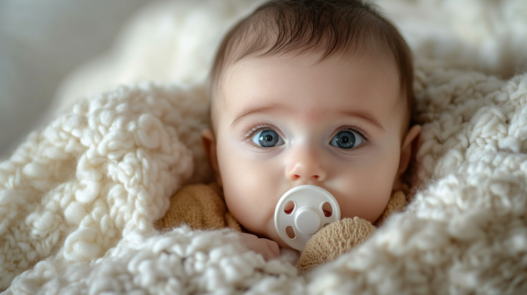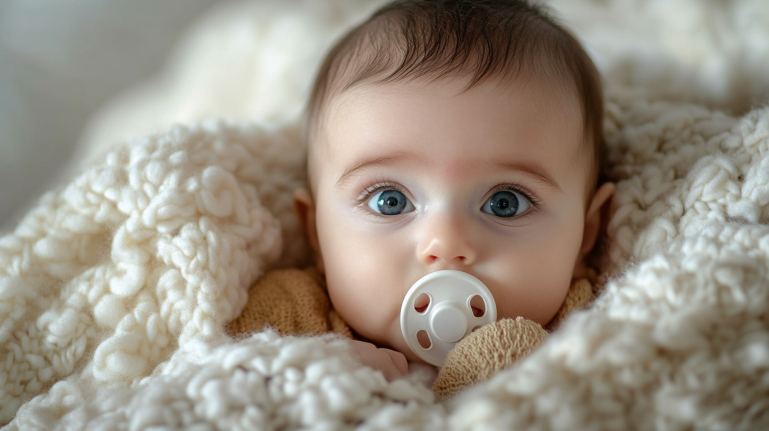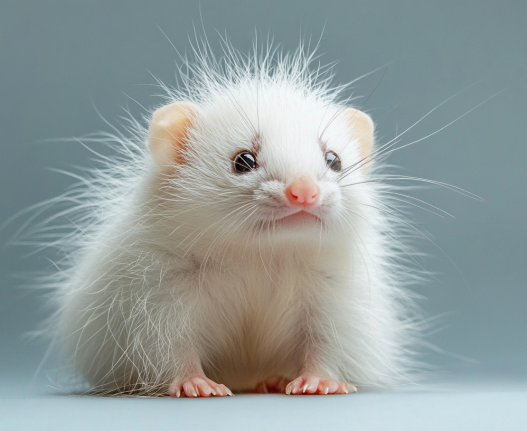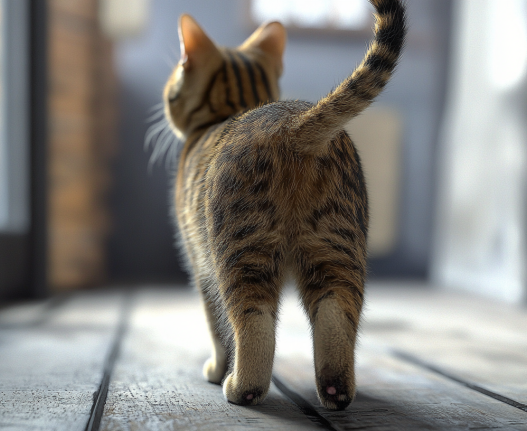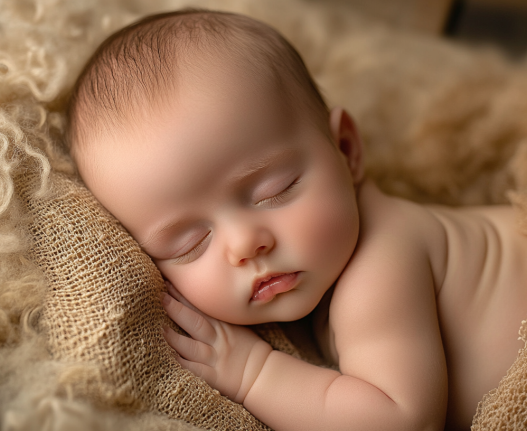For many new parents, pacifiers are a source of confusion. Are they a lifesaver or a potential problem for your baby? It’s a common question, but don’t worry—we’ve got you covered with everything you need to know.
What Is a Pacifier?
As the name suggests, a pacifier is a small device designed to soothe babies. Shaped like a nipple, it’s typically made of silicone or latex. But why does it work so well to calm babies?
The answer is simple: babies are born with a natural sucking reflex. This instinctive behavior helps newborns suck when something touches their lips. It provides them comfort and helps regulate emotions, making them feel calm and secure. So, when babies cry, struggle to sleep, or feel uneasy, pacifiers work like a “calming switch,” instantly turning chaos into calmness.
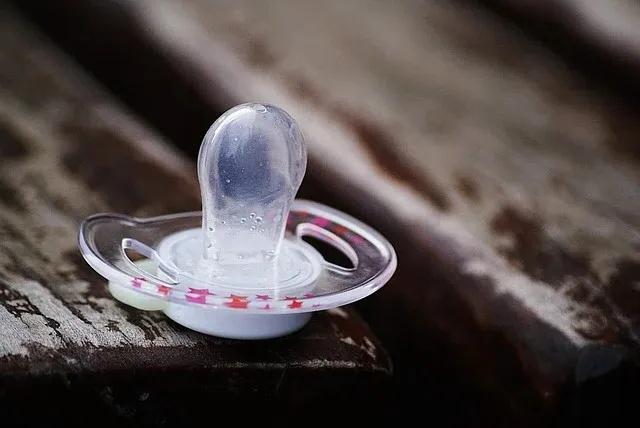
But there’s a catch—while pacifiers can be a great tool, using them incorrectly can lead to problems. That’s why many parents are cautious despite their obvious benefits.
The Pros and Cons of Using a Pacifier: What You Should Know
Before deciding whether a pacifier is right for your baby, it’s important to understand both its advantages and disadvantages.
The Benefits of Pacifiers
- Soothing Emotions: Pacifiers help babies calm down, especially when they’re upset, gassy, or fussy. The sucking motion makes them feel secure and comfortable, quickly easing their distress.
- Better Sleep: Some babies struggle to fall asleep without sucking on something. A pacifier can replace a bottle, helping babies sleep without the need for feeding, which gives parents a much-needed break.
- Reduced Risk of Sudden Infant Death Syndrome (SIDS): Studies have shown that pacifier use during sleep can reduce the risk of SIDS. They keep the baby’s airway open and help with proper tongue placement, reducing the chance of sudden incidents during sleep.
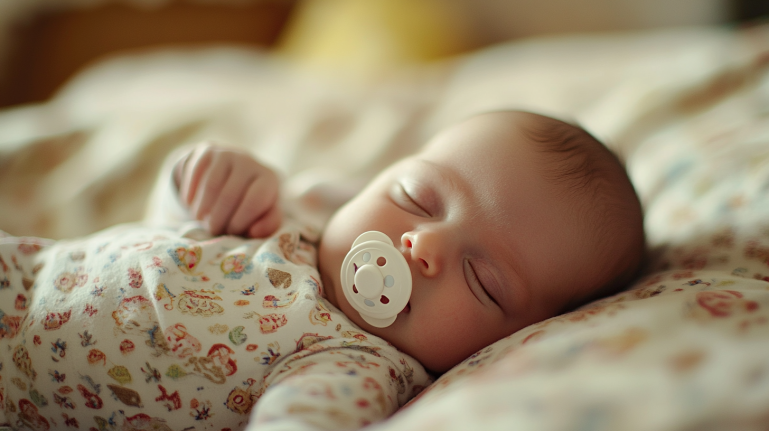
The Drawbacks of Pacifiers
- Dental Development Issues: Overuse or improper use of pacifiers can affect a baby’s dental development, leading to issues like misaligned teeth or overbites, particularly after the age of 2.
- Potential for Dependency: Babies can become overly reliant on pacifiers, needing them constantly—even to fall asleep. This can be frustrating for parents.
- Hygiene Risks: Pacifiers can harbor bacteria if not cleaned properly, which increases the risk of infections.
- Interference with Breastfeeding: Introducing a pacifier too early may interfere with breastfeeding, affecting the baby’s ability to latch properly and potentially disrupting milk supply.
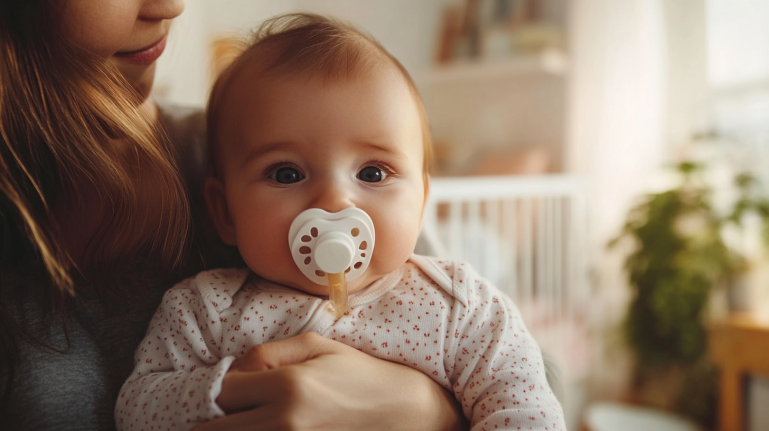
Should You Use a Pacifier for Your Baby? The Scientific Answer
The verdict is in: pacifiers can be a great tool, but only if used correctly. They’re not harmful by nature, but misuse can lead to issues.
Guidelines for Using a Pacifier Properly
- Wait Until Breastfeeding Is Established: If you’re breastfeeding, wait until your baby is 3-4 weeks old before introducing a pacifier to avoid interfering with breastfeeding.
- Limit Usage: Don’t use the pacifier all day. It should only be used in certain situations, such as to help the baby fall asleep or calm them down when they’re fussy.
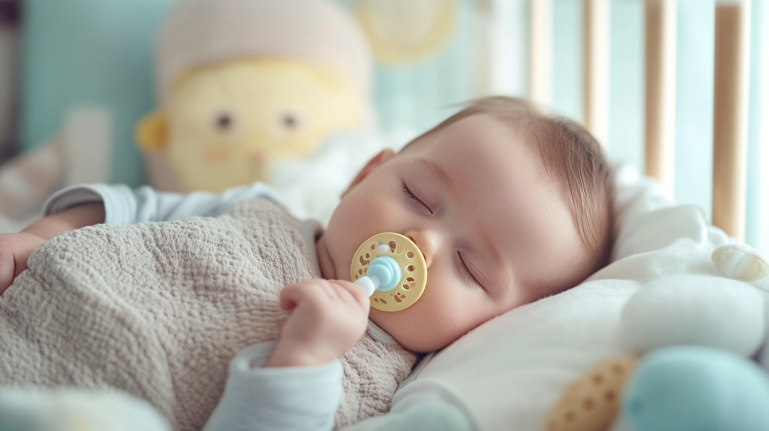
- Wean Off After Age 1: Experts like the World Health Organization (WHO) and the American Academy of Pediatrics (AAP) recommend reducing pacifier use by 12 months, and ideally stopping by age 2 to avoid long-term dependence.
- Clean Regularly: Ensure the pacifier is cleaned frequently to avoid bacterial buildup. If it falls on the floor, clean it thoroughly.
- Choose the Right Size: Make sure the pacifier is appropriate for your baby’s age to promote healthy oral development.
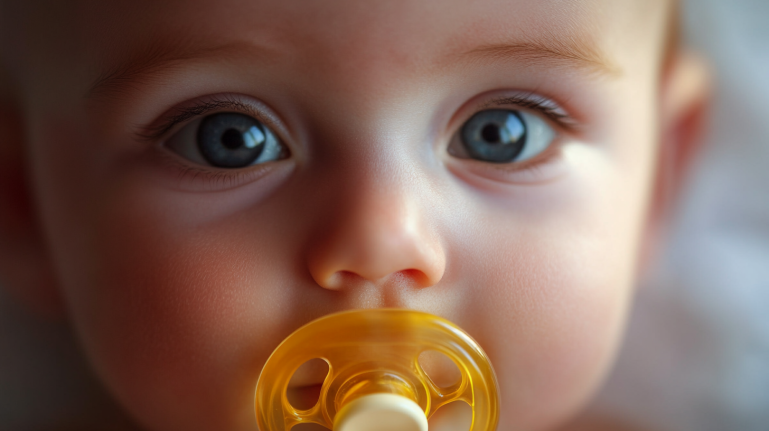
How to Gradually Wean Your Baby Off the Pacifier?
If your baby has become attached to their pacifier, you can gently wean them off it.
Take It Slow
Don’t take the pacifier away suddenly—it could lead to tantrums. Gradually reduce its use by limiting daytime use first and eventually stopping at bedtime.
Find Comforting Alternatives
Offer soothing substitutes like a soft toy or blanket to help ease the transition.
Use Positive Reinforcement
Encourage your baby with praise when they go without the pacifier. Focus on their progress, not setbacks.
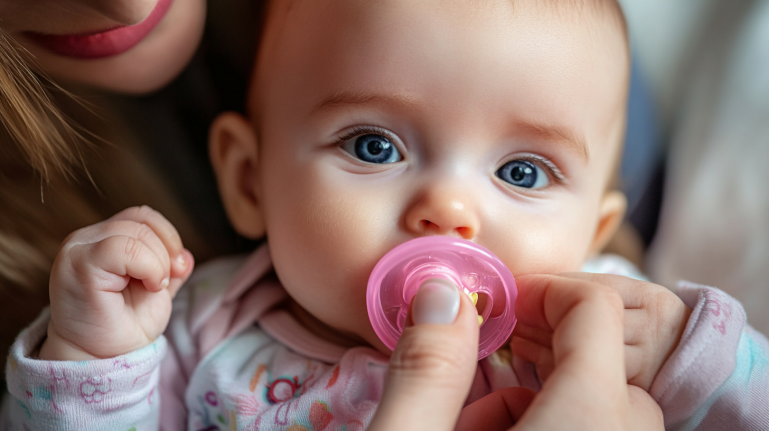
Conclusion: The Key to Using Pacifiers Wisely
A pacifier can be a great tool when used correctly, but misuse can lead to problems. Use it thoughtfully and in moderation to ensure it benefits both your baby’s development and emotional well-being. Parents don’t need to avoid pacifiers altogether, but they should be used wisely.







